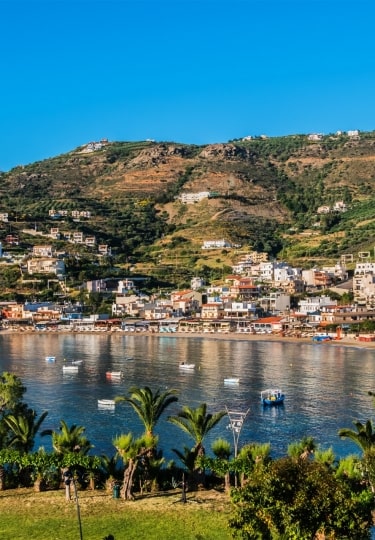The lifeblood of the island can be seen in the tiny villages of Crete. These important community hubs, whether on the whitest beach or the highest mountain, each offer opportunities to gain a deeper understanding of this unique island.
Where to start? It can be a challenge as there’s so much to see on Greece’s largest island, but here are 16 magical villages in Crete to explore.
Matala
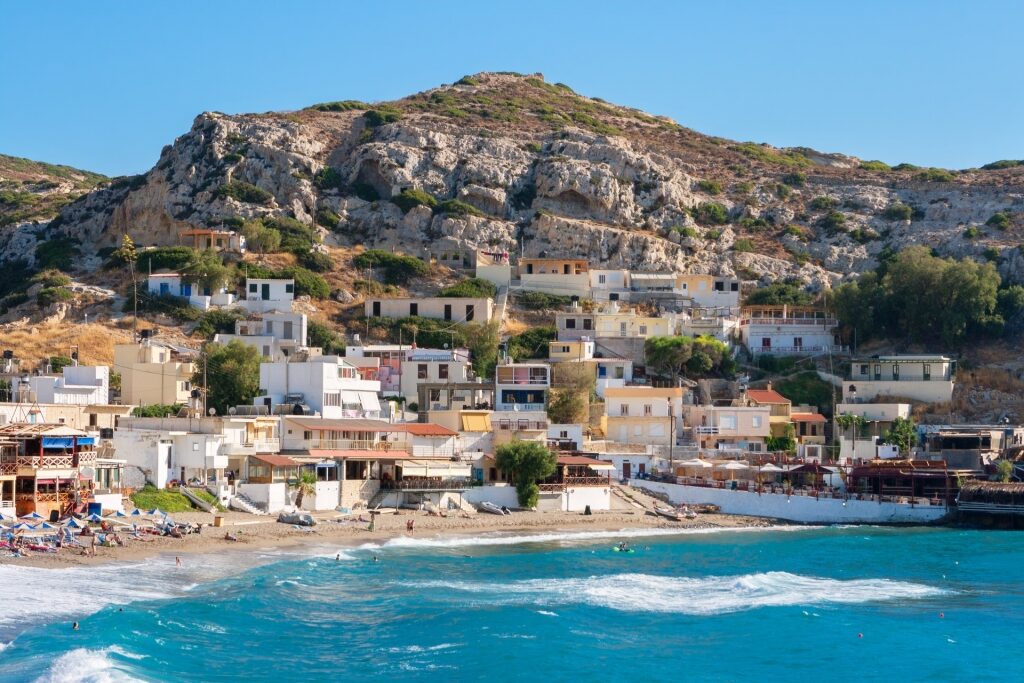
Matala
If you want to check out the village where Bob Dylan, Janis Joplin, and Cat Stevens used to holiday in the 1960s, then take the 50-mile drive from Heraklion to the south coast to seek out this unique retreat.
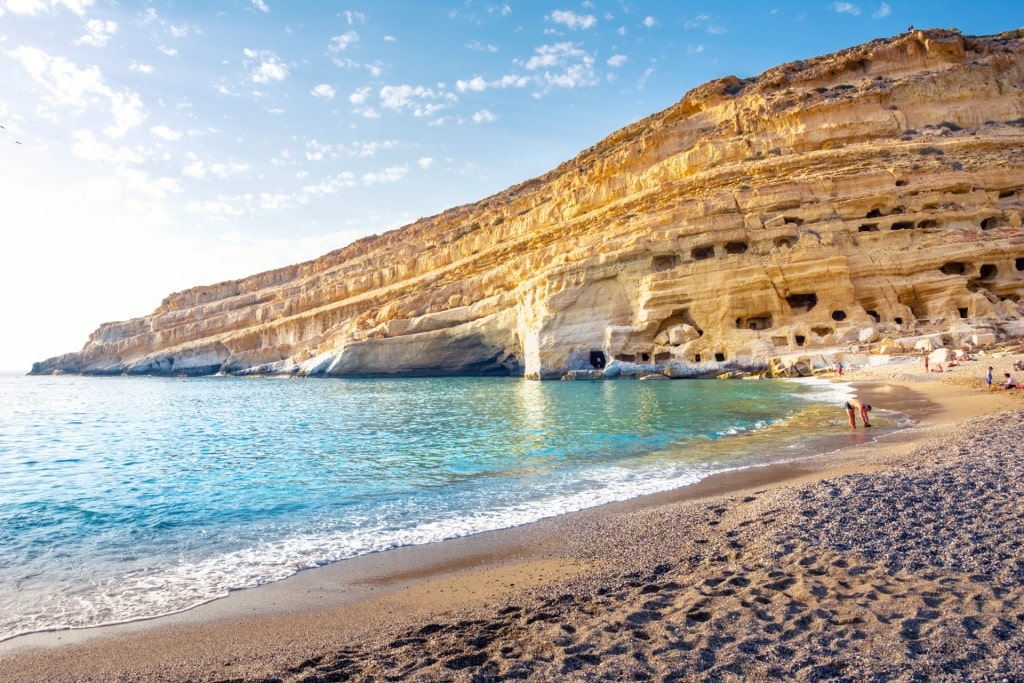
Matala Beach
Matala’s beach is home to a number of carved caves that became a hippy hangout in the Flower Power era, leading the way to a more developed resort today. The beach—a mix of shingle and sand —is well organized and remains the main draw for most people, but the town itself is impossibly pretty.
From the beach and traditional harbor, a series of typically island-style sugar cube houses climb the surrounding hills, and the streets are lined with places to dine and drink. Remnants of the ’60s culture can be found on some impressive artwork carved into tree stumps in the town center.
Agia Pelagia
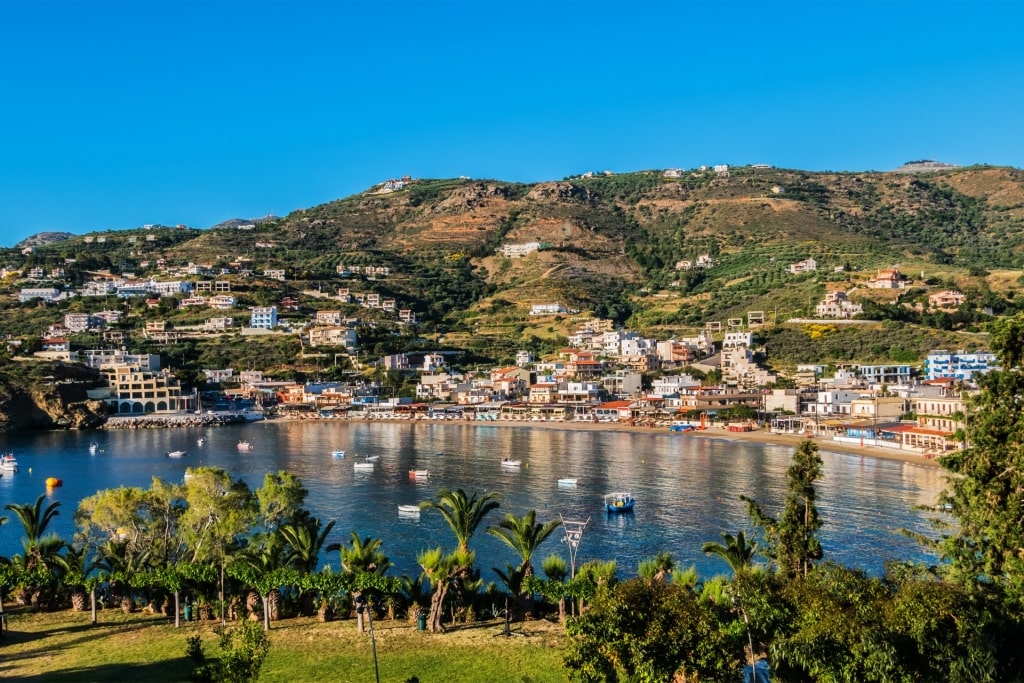
Agia Pelagia
Set on a majestic amphitheater-like bay around 14 miles northwest of Heraklion, Agia Pelagia (or Santa Marina) takes its name from an eponymous church just outside town, part of a Venetian-era monastery.
It is thought this former fishing village is much older than that though, with excavations suggesting today’s town sits on the site of an old Minoan city Apollonia, inhabited as early as 2000 BC.
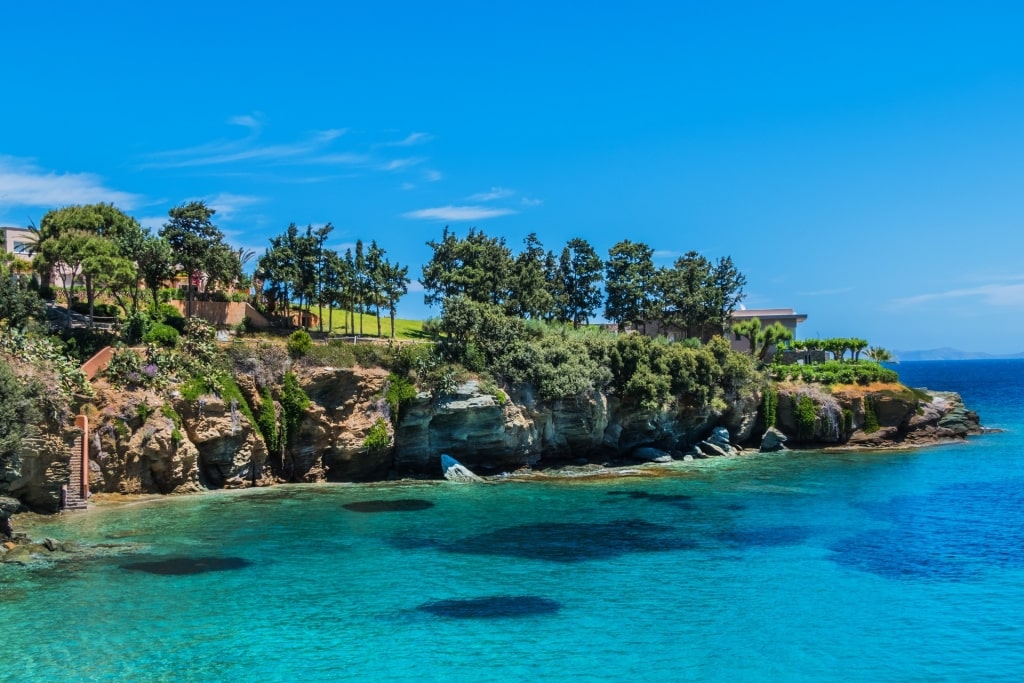
Agia Pelagia
The magnificent bay, of course, means beach and it’s a pretty special one here: a wide crescent of soft sand, lined with sunbeds and umbrellas, and backed by traditional tavernas, bars, and cafés.
Anogia
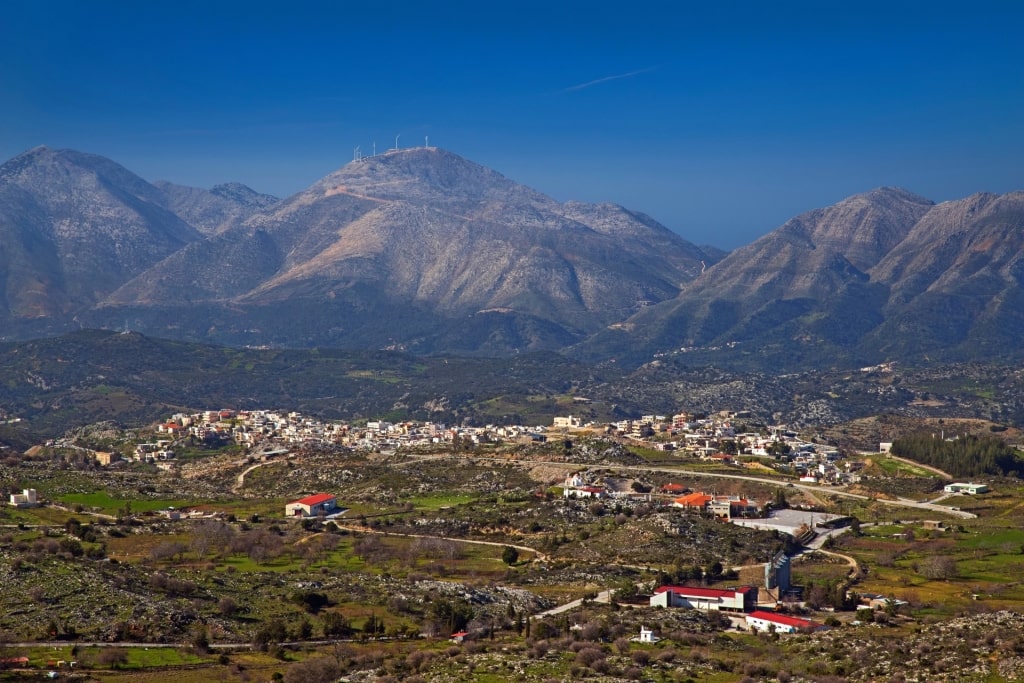
Anogia
Mount Ida (known locally as Psiloritis) is Crete’s highest mountain at 8,000 feet and Anogia is a traditional village sitting in its foothills, about an hour south of the port of Heraklion.
The village has been modernized over the years, but the winding inner streets retain a feel of old Crete: tree-shaded squares, houses with tiny balconies and kafenia (traditional Greek coffee shops) selling thick-as-molasses coffee and the local fire water, raki.
Visiting here is one of the best things to do in Crete if you want a lazy afternoon away from the coast (and cooler too thanks to the 2,000 feet altitude) browsing shops selling folk art and traditional weavings.
Read: Expert Tips for Planning a Trip to Greece
Spili
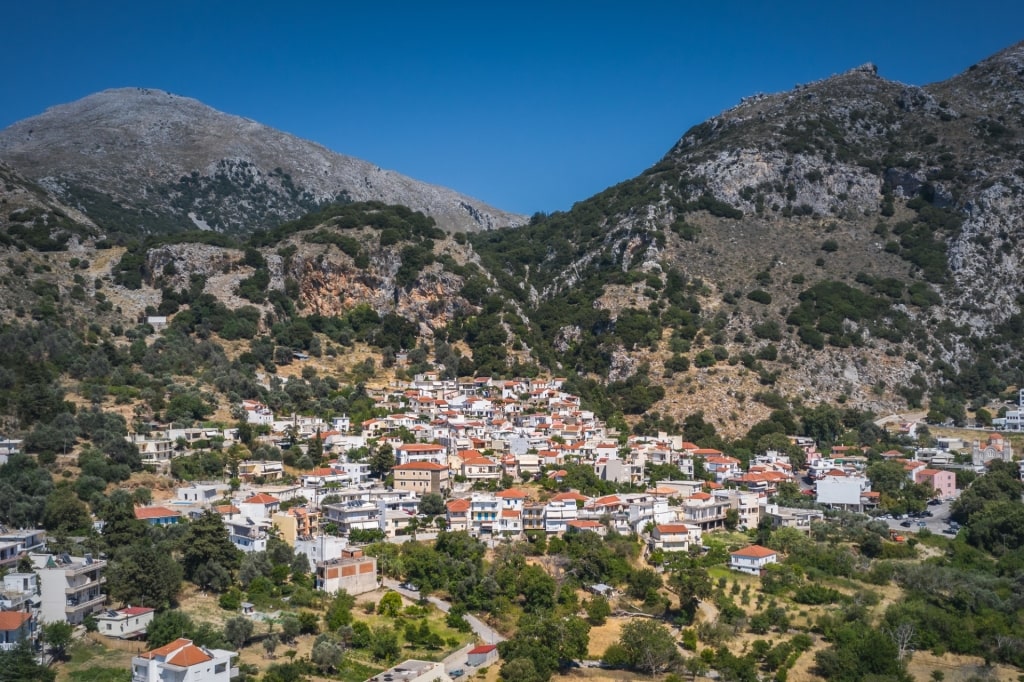
Spili
A small cluster of houses sitting among verdant forest and underneath a rocky outcrop, this small village with a population of just 800 sits at the crossroads between the north and south coasts, around 90 minutes from both Heraklion and Chania.
The drive here passes through the beautiful Amari Valley to arrive at the town, famed for its kefalovrissi, a series of brass lion heads with local spring water flowing from their mouths.
It’s a great spot to while away the afternoon, sitting under shaded plane trees, playing backgammon, tucking into a mezze, and listening to the calming waters.
Archanes
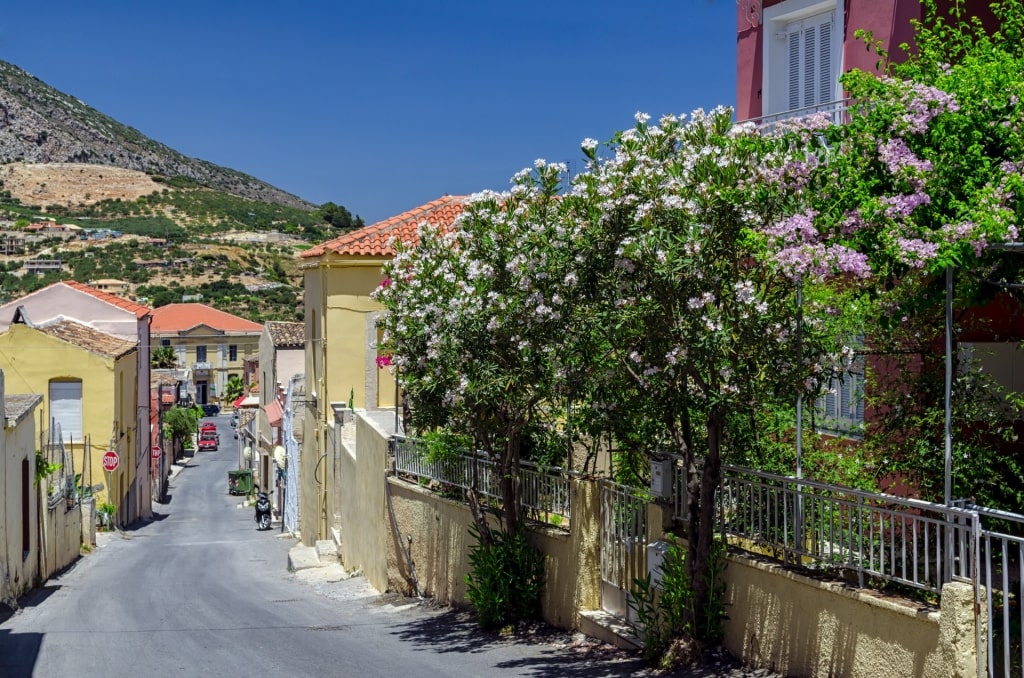
Archanes
Around 20 minutes south of Heraklion and set between Mount Psiloritis and Mount Spathi, Archanes is one of Crete’s most historic villages, dating from the Bronze Age Minoan period.
In actual fact, the village is divided into two: Kato (lower) Archanes and Ano (upper) Archanes, with the latter being the most popular of the two.
Both are home to elegant neoclassical buildings in pastel colors, Byzantine and Venetian-era churches, and tiny alleys and squares where flashes of scarlet bougainvillea readily catch the eye.
Nearby, one can explore Minoan-era tombs, local wine and olive oil producers, or take a hike in the surrounding mountains and valleys.
Charakas
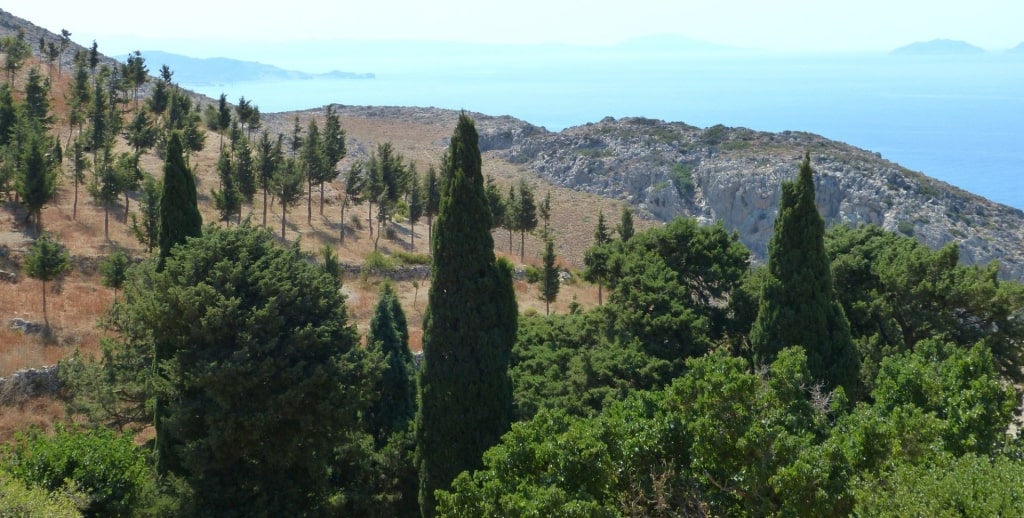
Mount Asterousia
Overlooking a vast plain from the foothills of Mount Asterousia, Charakas is fairly typical of many inland Crete villages.
A small population of around 1,000 people live in mainly stone-built traditional houses and there are a number of pretty churches that span the centuries, as well the obligatory local tavernas.
What sets it apart though is the huge, 120-ft rock formation from which the village takes its name (charakas means rock). Climbing to the top not only reveals the ruins of a 14th-century Venetian fortress but also a restored Byzantine-era church.
Best of all are the photogenic views that expand from the Plain of Mesara to the south coast.
Read: Fascinating Ancient Greek Ruins to Explore
Agioi Deka
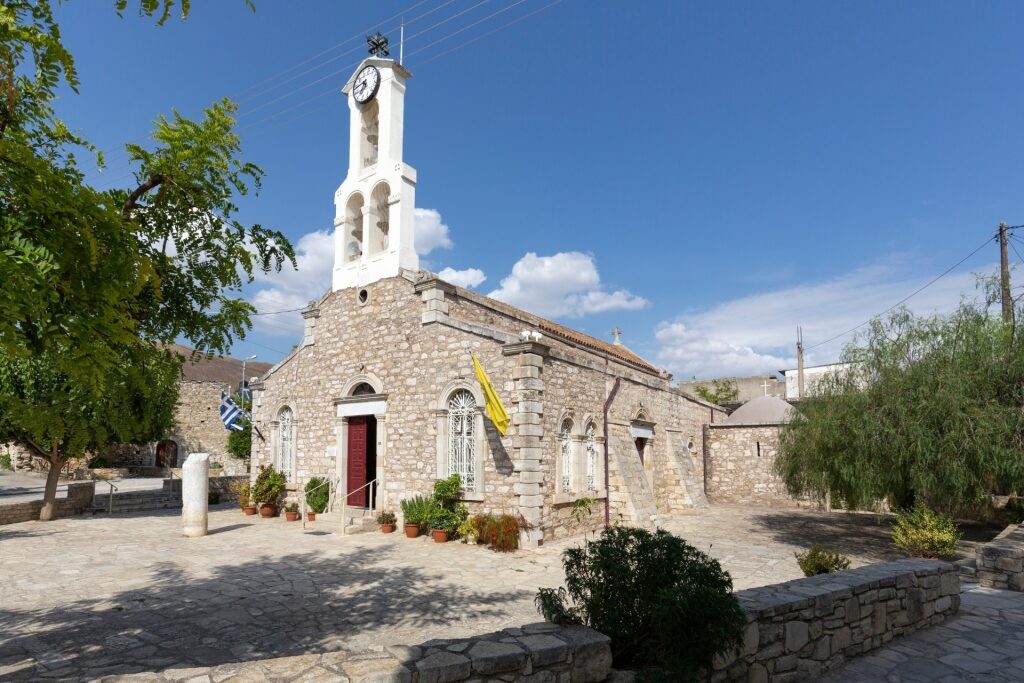
Agioi Deka
There’s fascinating religious history at this small village 45 minutes south of Heraklion that takes its name—which translates as ten saints—from the Ten Martyrs of Crete who lost their lives here in 250 AD during the religious persecutions by the then Roman emperor Decius.
The winding streets of the old town make for a lovely atmospheric walk and the Byzantine Basilica dedicated to the ten is a moving experience. A neighboring, more modern shrine has been built on the spot where the martyrs are buried.
Elsewhere, there are magnificent views over the Plain of Mesara, some of Crete’s oldest olive groves to explore and excavations and the nearby fascinating ancient city of Gortys.
Zaros
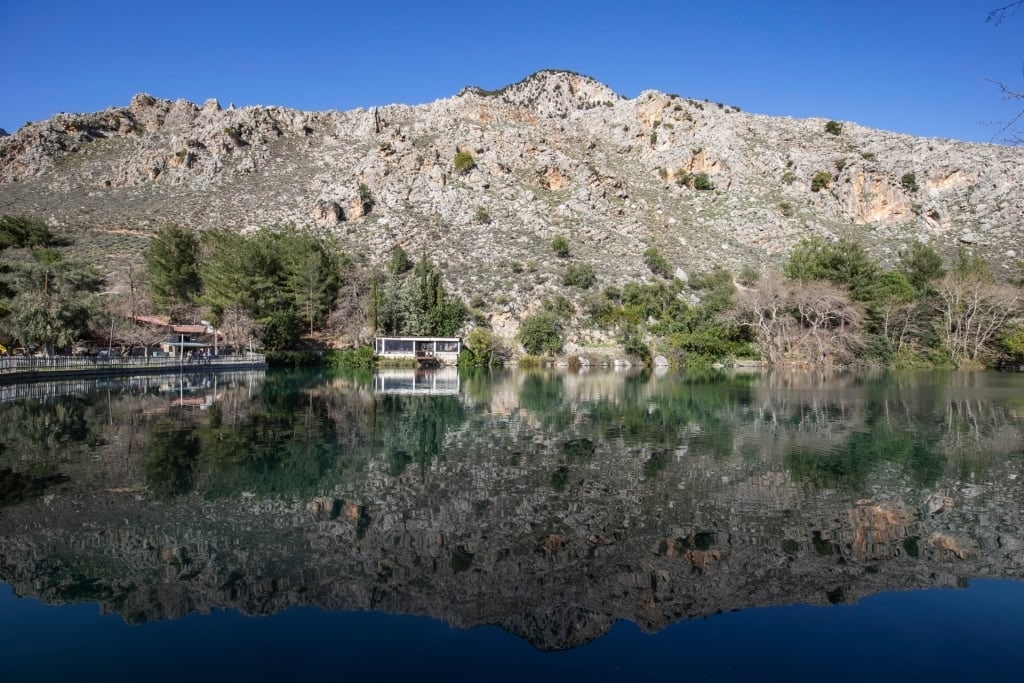
Zaros
You’re likely to see the name of this village in the southern foothills of Mount Psiloritis all over the island as it’s home to the springs that give life to Crete’s most popular bottled mineral water.
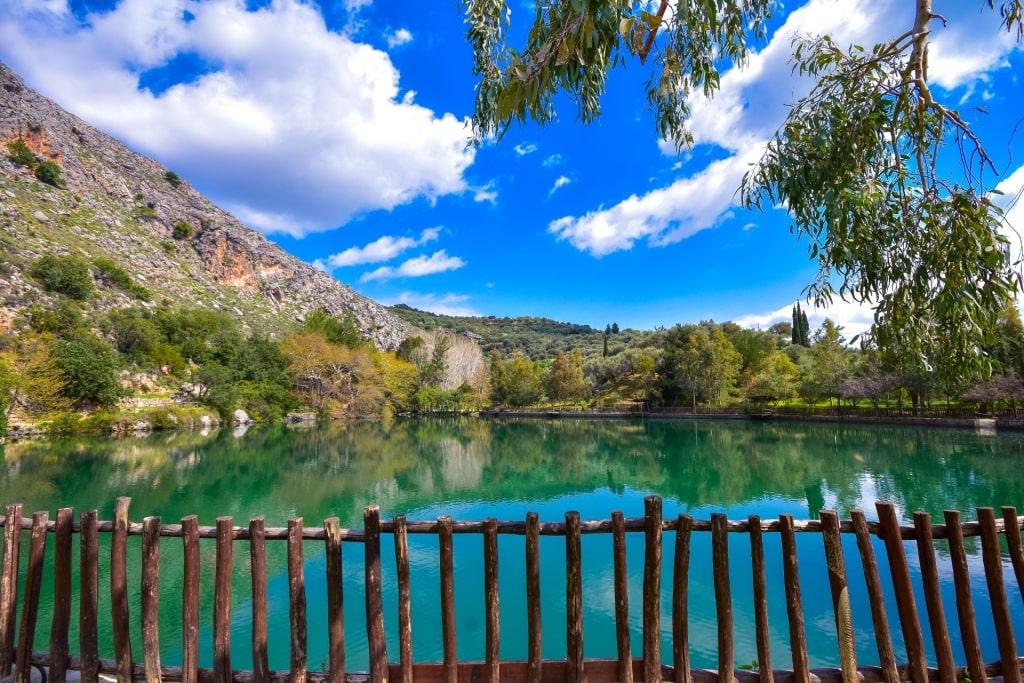
Lake Votomos
There’s much to do and discover here: relaxing by picturesque Lake Votomos, hiking through plane, pine, and maple trees in the Agios Nikolaos Gorge, taking in water mills in operation since the 16th century, and visiting ancient archaeological sites.
In a twist from traditional Greek seafood, a number of fish farms are also located around the village, serving freshwater trout and salmon in their lakeside tavernas.
Agii Apostoli
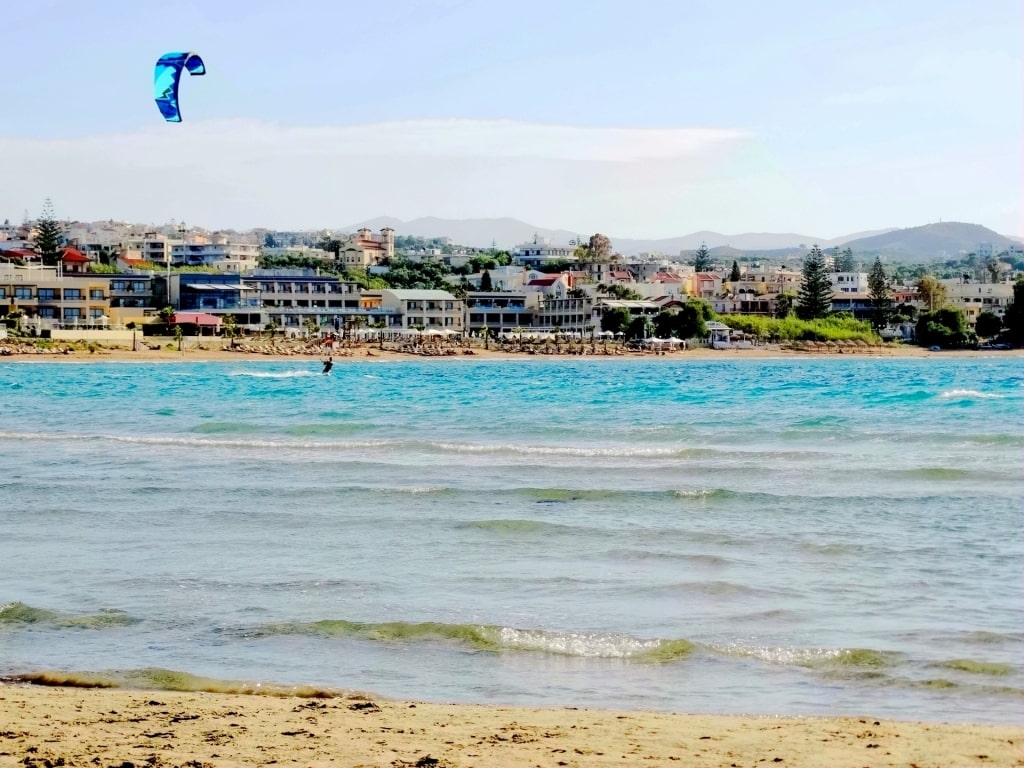
Agii Apostoli
Chania’s striking Old Venetian Harbor is its biggest draw, but if you want a cooling dip on a summer visit, you need to head out of town to one of the surrounding beaches. The small village of Agii Apostoli is a good choice, just a 15-minute drive to the west.
Set over two small bays, each with a well-organized beach offering chairs, beds, and umbrellas for rent, the village takes its name from a church on the small promontory that separates the bays. It’s worth a walk up here as its elevated position offers great views over the Gulf of Chania to the small islet of Agii Theodori.
Gavalochori
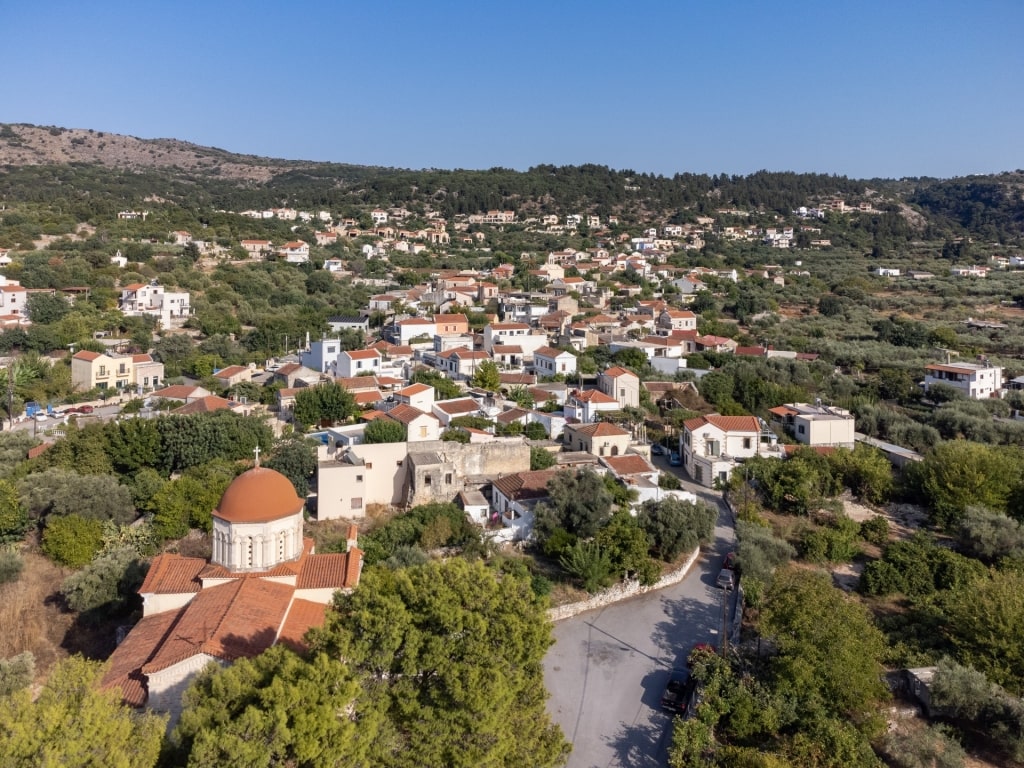
Gavalochori Photo by C messier on Wikimedia Commons, licensed under CC BY-SA 4.0
Named after the Gavalas family in the Venetian era (Gavalochori means Gavalas Village), this pretty town sits just inland from the coast, a 30-minute drive east of Chania.
Despite having a population of just 350, it offers a great insight into a typically Cretan village: winding streets, neoclassical architecture, shaded public squares, Venetian arches, and Roman tombs, as well as 14 Greek Orthodox churches.
Unique to the village is an interesting folklore museum and a pre-industrial olive oil mill. Olives are one of the main produce of the surrounding area and can be picked up from the village shops, while lunch options include dining at one of the village’s two tavernas or the local café.
Georgioupolis
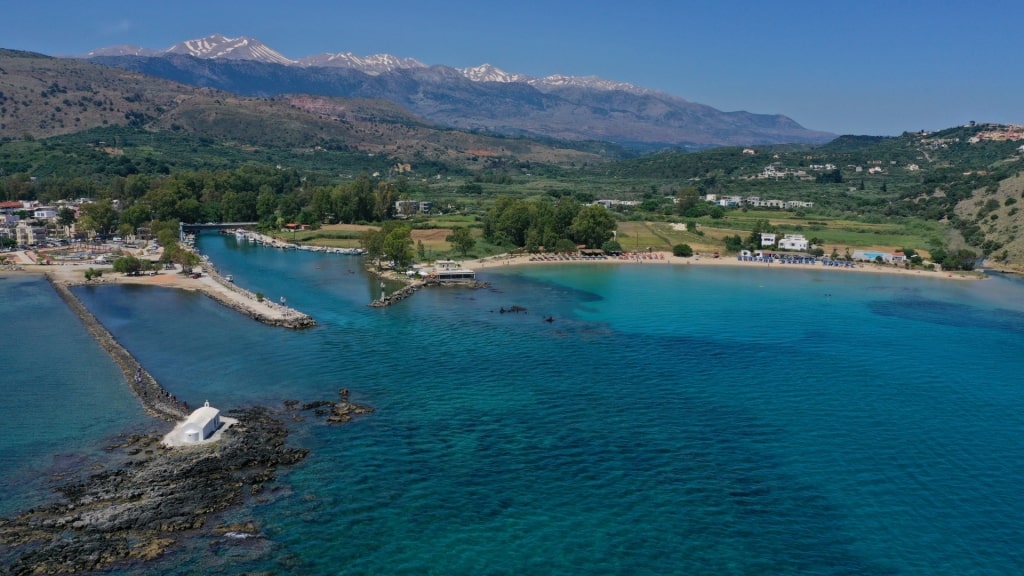
Georgioupolis
This small resort village sits between two rivers—Almiros and Perastikos—that flow from Crete’s White Mountains, one of the most impressive mountain ranges in Greece. It’s also home to one of the island’s longest beaches.
The unique location where freshwater meets the sea makes it much greener than other coastal villages. You’ll arrive via an avenue of tall eucalyptus trees that form a natural canopy over the road and there are many wetlands to explore where the rivers meet the seas.
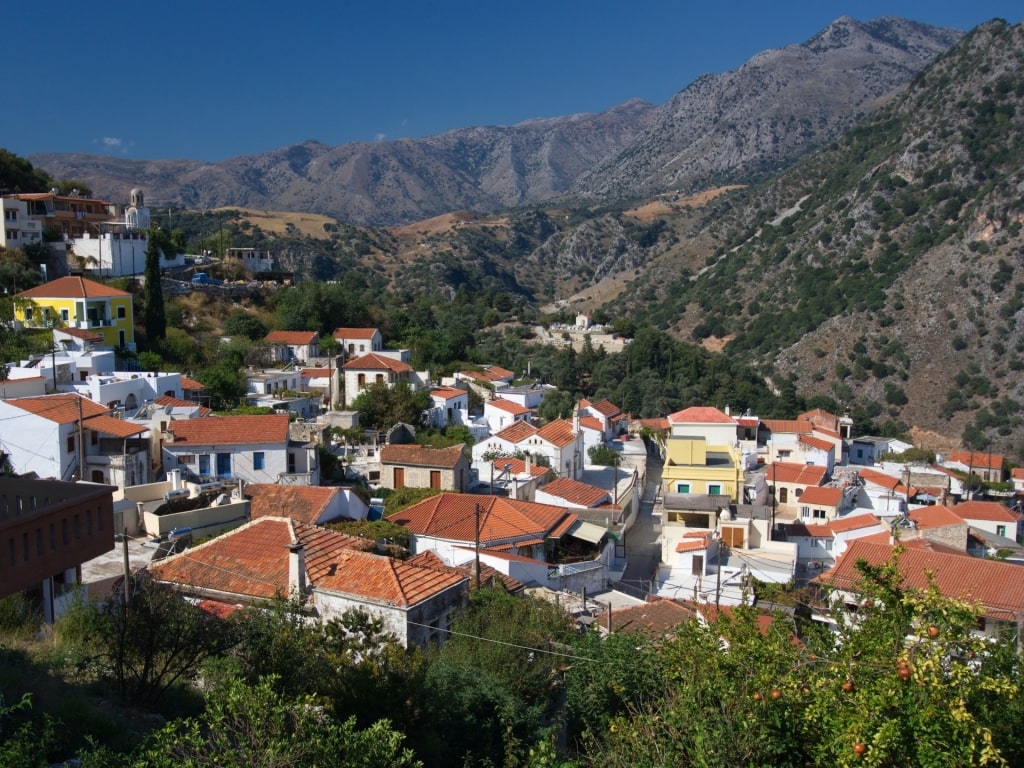
Georgioupolis
A 40-minute drive south-east of Chania, the village is also home to the usual array of tavernas and cafés, while nearby activities include horseback riding, water sports, and hiking.
At low tide, take the rocky walkway that leads to the small chapel Agios Nikolaos set on an islet just off shore to light a candle to a loved one.
Vamos
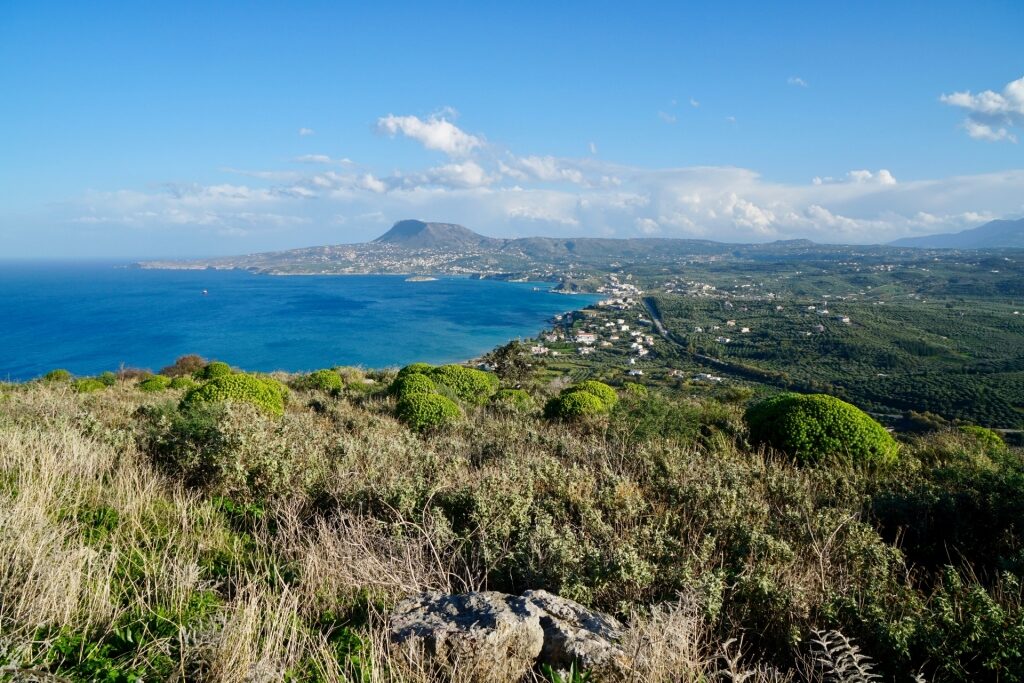
Vamos
This small village in the foothills of the White Mountains, a half-hour drive from Chania, is thought to have its origins in an eighth-century pirate settlement, although it was the Venetians who really put it on the map in the 15th century.
Ottoman rule post-1700 saw Vamos become the headquarters of their conquering army, but today it’s a sleepier affair with a series of side streets leading off a central main road.
Those streets are well worth exploring thanks to well-preserved architecture, traditional stone roads, chapels, and the remains of both a monastery and a traditional olive press.
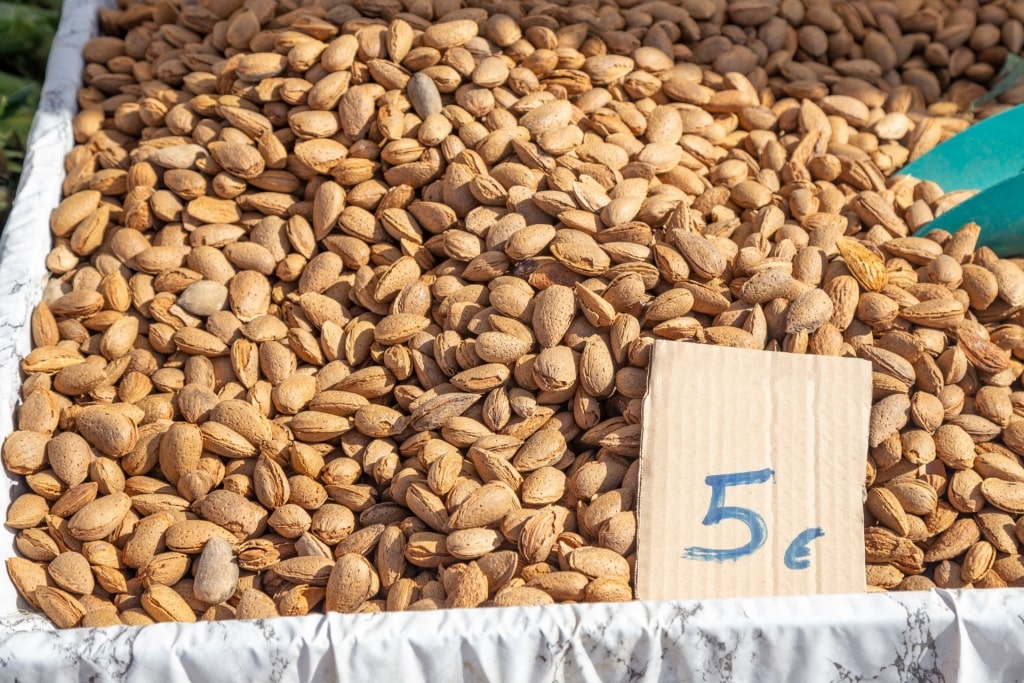
Almonds
The town is also famed for its array of plant life including almond, walnut, fig and lemon trees, as well as olive groves and grape plantations. A local cooking school brings this rich larder together in a series of lessons on local food.
Meskla
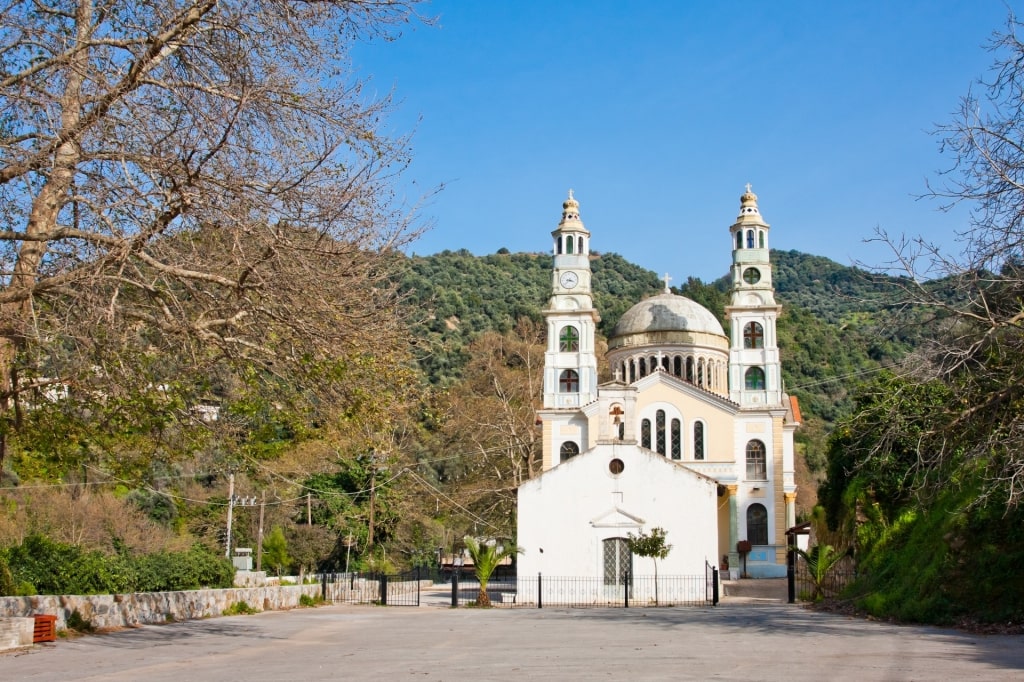
Meskla
Crete is famed for its dramatic gorge walking and for those intimidated by the famed Samaria Gorge hike, Sarakina Gorge, outside the tiny village of Meskla, offers a much less robust challenge.
The circular route starts and ends in the village with entrance to the gorge proper being characterized by a split in limestone rocks that gives the appearance of a secret doorway.
The short but impressive route is constantly under the shade of cypresses and plane trees, making it easily doable even in the heat of summer.
The pretty mountain village itself is worth exploring, post-hike. At its heart is a family-run taverna offering hearty food on a vast tree-shaded terrace—an ideal place to fuel up. Need more to do? There are also several churches and chapels to explore around the village.
Read: Best Places to Go Hiking in Greece
Paleochora
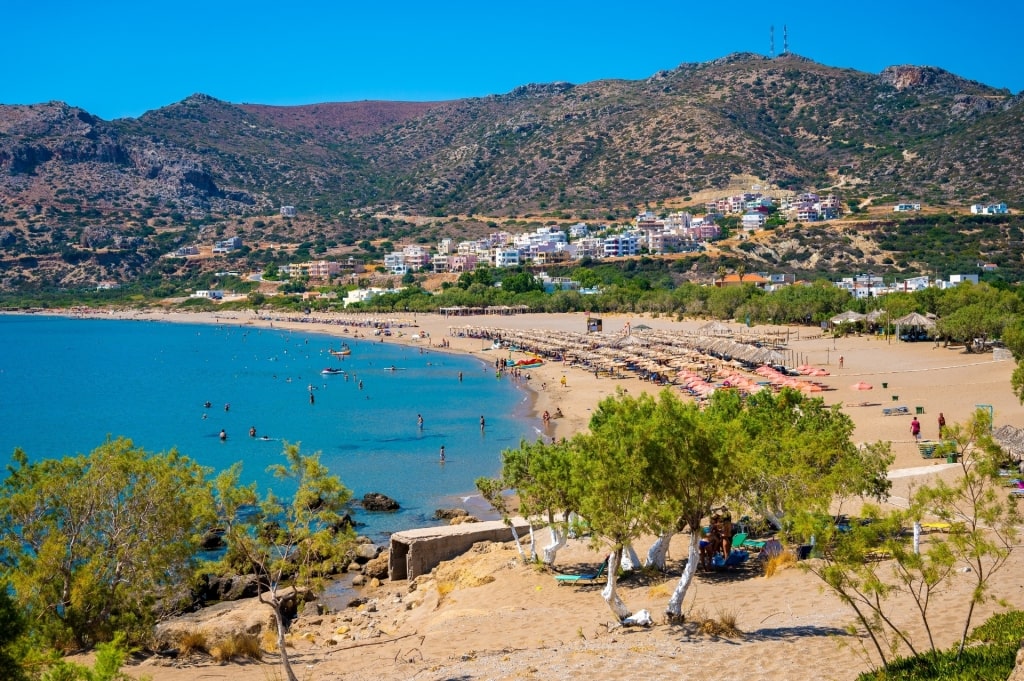
Paleochora
Some 50 miles south of Chania, this charming village on the south coast offers the best of Crete into one small package.
Set on a rocky peninsula, it’s home to some of the island’s best beaches (including the magnificent Pachia Ammos), a picturesque quayside, the ruins of a Venetian castle looking over the village’s winding streets, and a quaint folklore museum.
The surrounding hills take care of the “other” side of the island: beautiful gorges and deep caves to explore, and wineries and olive oil producers to visit.
Read: Best Beaches in Greece
Kandanos
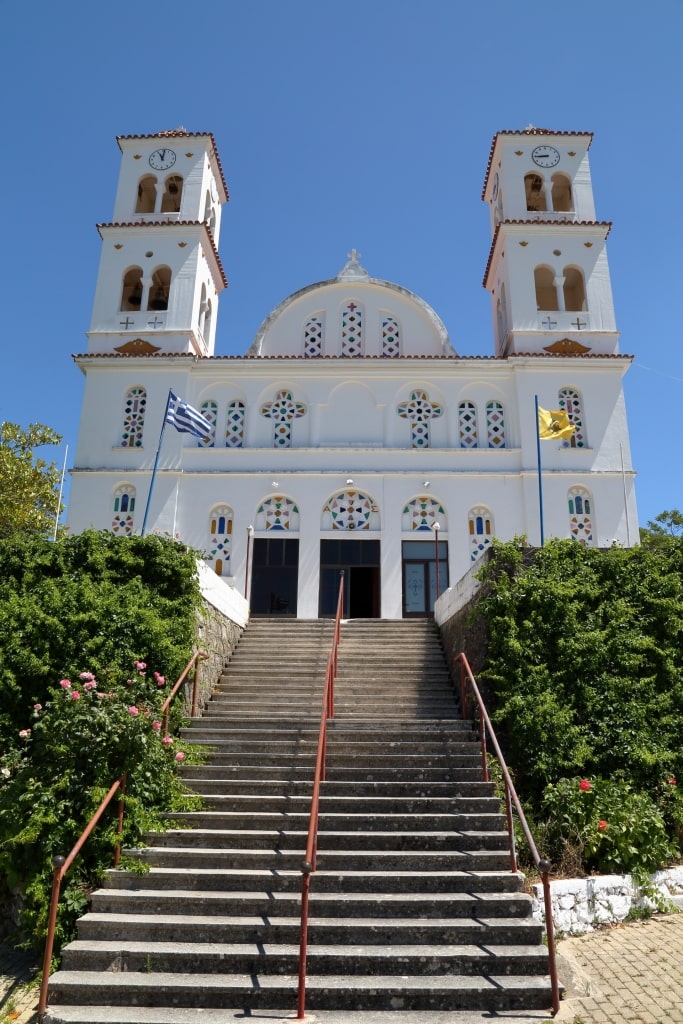
Kandanos
Kandanos is a picturesque village, set among fertile plains of olive groves and vineyards, with a magnificent Orthodox church at its heart and tree-lined streets and squares to explore.
Its history, though, belies the pleasant surroundings of today as this was an important staging point in Byzantine and Venetian times. The villagers played an important role in revolting against Ottoman rule in the early 19th century.
That revolutionary spirit provided costly when applied against the Nazis during the German occupation of World War II. Following a battle in which they delayed advancing troops for several days, the subsequent reprisals saw one of the island’s worst war crimes.
The village was razed to the ground and around 180 residents and all livestock were killed. A memorial to those who passed stands today in the main square, providing a moving tribute to the tragic event.
Anopolis
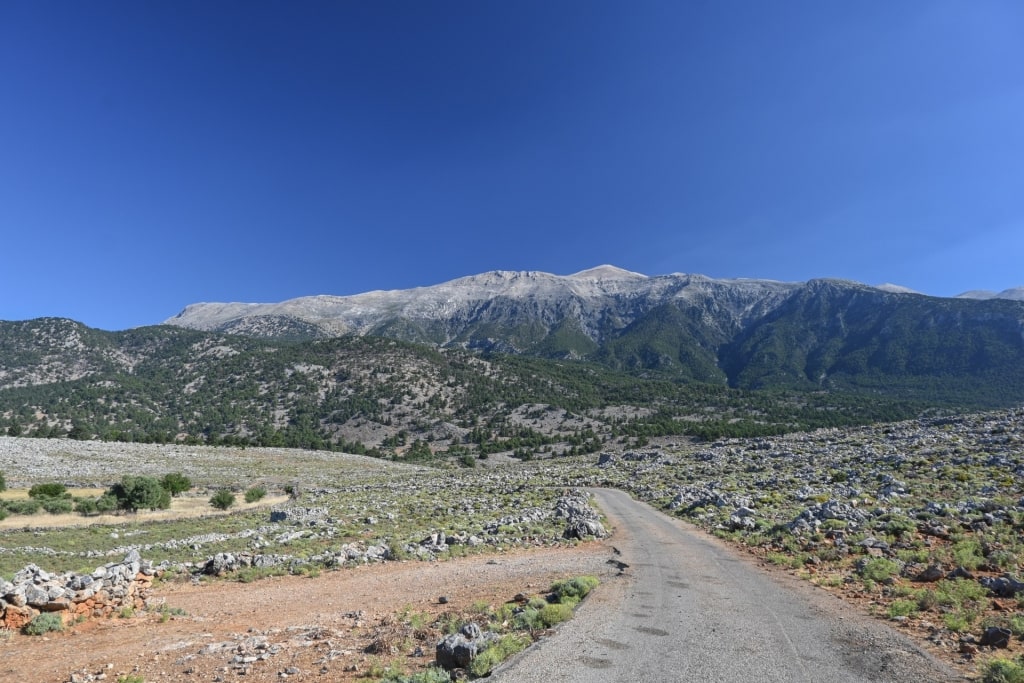
Anopolis
Set high in the White Mountains on the southwest coast, Anopolis means simply “upper city” thanks to its 2,000-ft altitude and incredible views of the surrounding peaks.
Reached by a series of steep switchbacks on the approach road, the village sits on a straight stretch that makes it unusually long and skinny by Greek standards.
The village’s notional center can be found at the monument to its most famous son, wealthy shipbuilder turned resistance fighter Daskologiannis (1725-1771), which happens to be close to a well-run family taverna with a shaded courtyard.
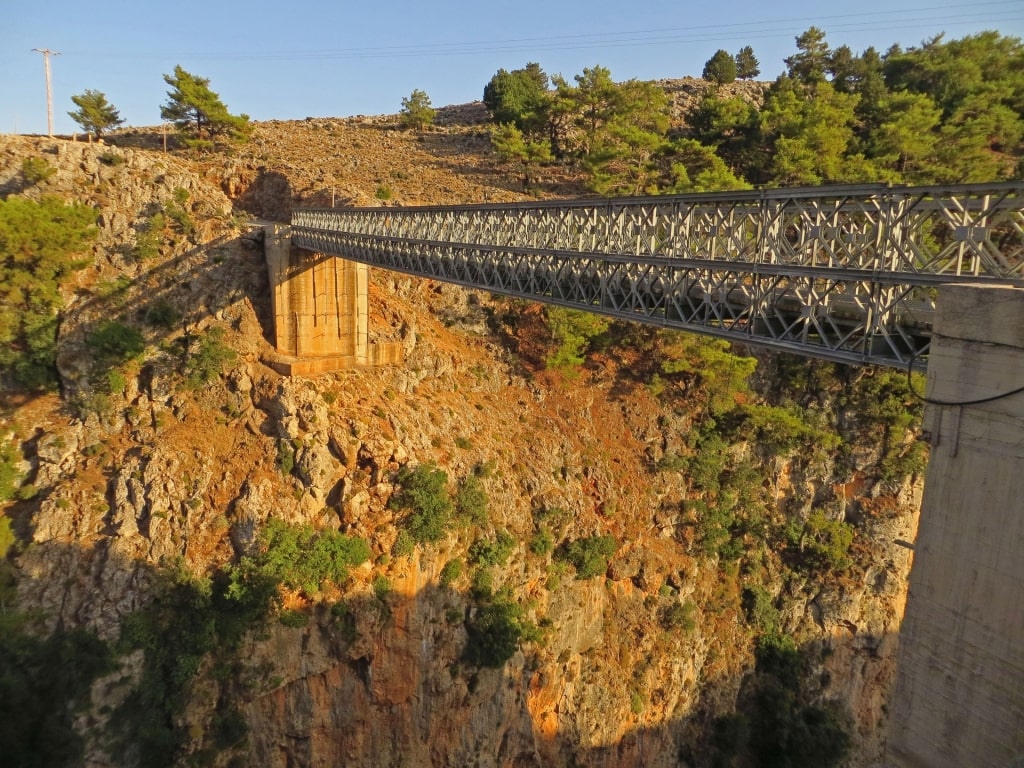
Bridge in Anopolis
Many visit here for the mountain scenery and clean air, but an increasing number now take part in adrenalin-fueled activities such as bungee jumping off a rickety bridge at the neighboring abandoned village of Aradena. The drop into the eponymous gorge below is a head-swooning 460 feet.
Ready to explore some of the loveliest villages in Crete? Browse Celebrity’s cruises to Crete and plan your Greek adventure.
